Role
User Research, Ideation, Presentations, Team Coordination
Project Collaborators: Macie Mancini, sahibzada mayed, Ritika Ramesh
Context
Teams were tasked with engaging non-traditional learners, specifically those looking to start or switch their careers, at various stages in the process of earning an online professional certificate.
My team focused on setting learners up for success after completing their certificate by creating a unique way to help them showcase themselves to future employers.
This project continues to be under NDA. Items may be blurred or masked for confidentiality.
deliverables
We produced a high-fidelity, interactive digital prototype and presented our research and concepts to our client sponsor team.
Athena Capture is a guided process of personal and professional reflections collected each week to help learners compile a case study-like, shareable document at the end of a certificate course
Key Features:
- Opt in/out at the beginning of the course to manage notifications and in-situ
reflection windows
- Reflection responses, chosen skills, etc. compiled automatically
- Capture Editor page options give learners the flexibility to customize their document
with drag-and-drop, editable fields, and templates to help get them started
- Easily accessible with the ability to print, download, and share to multiple platforms
Learners get the personalization and guidance they desire to highlight their progress
Hiring Managers and Recruiters get a digestible summary of skills and narrative that give insight into a candidate
Our Client gets a tool that integrates well into their current platform and curated testimonial content to help more learners be prepared to achieve their career goals
Takeaway
Sometimes, the best way to learn is by doing.
I had very little experience with Figma prior to this class, and with the rapid pace of the class, I had to jump right in. Now, I’m much more comfortable navigating the tool and discovering and learning new functions each time I visit.
Process
Research
Our project consisted of two design sprints (ten weeks total), each of which included research interviews with seven learners, to understand their process of attaining and displaying new skills, and seven hiring managers and recruiters, to understand their process of identifying and vetting candidates. In the second sprint, which was focused on concept development, we were able to talk with our interviewees about the positives, negatives, and nice-to-haves for our high-fidelity prototype.
In addition, we did secondary research of adjacent and competitive platforms, assessing what those platforms do well to keep users engaged including transparency of objectives, graphics, and macro- and micro-interactions.
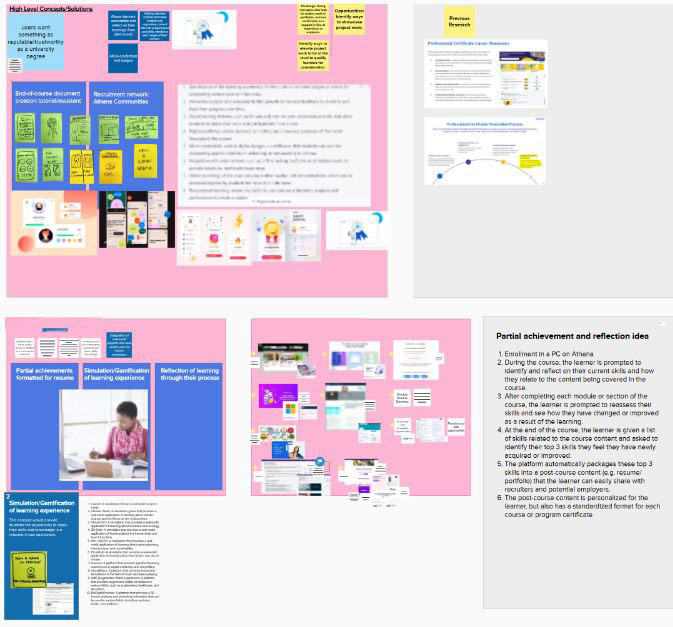
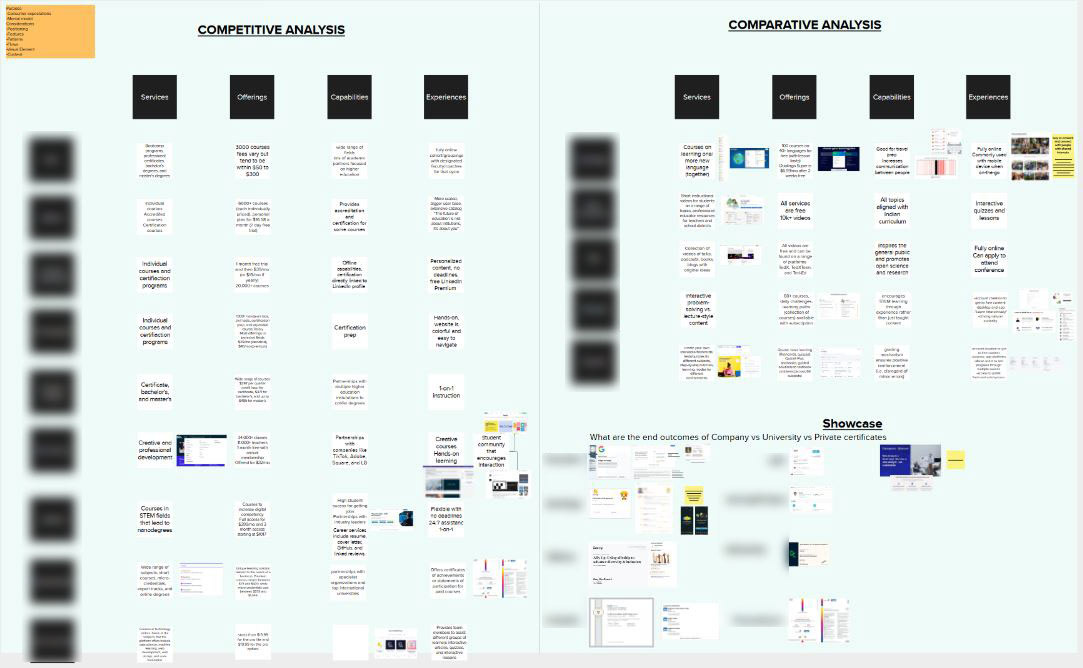
Adjacent research exploration using MURAL
Insights, Tensions, and Opportunities
Throughout our research phase, we heard a variety of answers in response to our questions around how learners prefer to portray themselves and how employers prefer to find candidates. Often, while they had a similar end goal (to find and fill a job), the two perspectives were in conflict.
For instance, a learner may desire to personalize and customize their content while a recruiter may wish for more standardized formats to easily review candidates in a short amount of time. From our discussions, we formalized these insights and tensions into the following:
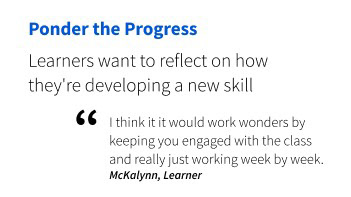
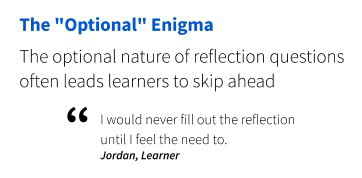
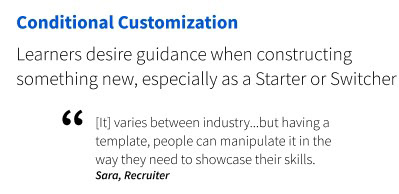
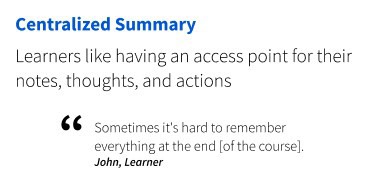
After iterating on our language and opportunity statements to make them more reflective of the client’s prior research and focused on our team’s objective, we knew we wanted to keep these design directives in mind as we moved into concepting:
Amplifying Individual Style: Users should feel like they can utilize showcasing activities throughout the course that are most relevant to their unique experiences, configure those elements into their job-ready documents, and highlight their individuality
Measurable Learning Progress: Users should be able to represent their level of knowledge at several points throughout their course(s)
Process-Based, Career-Oriented: Users should feel that the process is just as important as the certificate obtained
Continuous Preparedness: Users should feel like they're always ready to apply for their dream job if they see it posted. The showcasing activities throughout the course will give them plenty of opportunities to grow and update their job-ready documents.
Ideation & Concepting
Since our team was advocating for two different stakeholder groups, our solution needed to meet their needs while maintaining value for our client. We were encouraged to think beyond what existed on the platform, but to keep feasibility in mind both in the short-term and long-term.
After considering concepts like partial achievement badges, creative simulation challenges, and video reflections, we narrowed down to our final concept, Athena Capture.